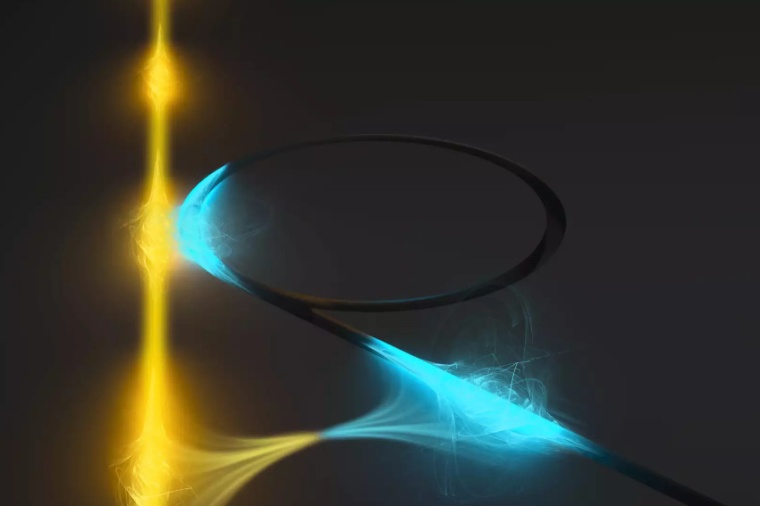Combining free electrons and photons
New findings expand the toolbox of quantum technology.
Experts worldwide are trying to implement findings from basic research into quantum technologies. To this end, they often require individual particles, such as photons with tailored properties. However, obtaining individual particles is complicated and requires intricate methods. Now, researchers from Germany and Switzerland present a new method that simultaneously generates two individual particles in form of a pair. The findings of the study expand the toolbox of quantum technology.

The international team from the Göttingen Max Planck Institute (MPI) for Multidisciplinary Sciences, the University of Göttingen, and the Swiss Federal Institute of Technology in Lausanne (EPFL)succeeded in coupling single free electrons and photons in an electron microscope. In the Göttingen experiment, the beam from an electron microscope passes through an integrated optical chip, fabricated by the Swiss team. The chip consists of a fiber-optic coupling and a ring-shaped resonator that stores light by keeping moving photons on a circular path.
“When an electron scatters at the initially empty resonator, a photon is generated,” explains Armin Feist, scientist at the MPI. “In the process, the electron loses exactly the amount of energy that the photon requires to be created virtually from nothing in the resonator. As a result, the two particles are coupled through their interaction and form a pair.” With an improved measurement method, the physicists could precisely detect the individual particles involved and their simultaneous manifestation.
“With the electron-photon pair, we only need to measure one particle to obtain information about the energy content and temporal appearance of the second one,” emphasizes Germaine Arend, a PhD candidate at the MPI. This allows researchers to use one quantum particle in an experiment while, at the same time, confirming its presence by detecting the other particle, in a heralding scheme. Such a feature is necessary for many applications in quantum technology.
Max Planck Director Claus Ropers sees electron-photon pairs as a new opportunity for quantum research: “The method opens up fascinating new possibilities in electron microscopy. In the field of quantum optics, entangled photon pairs already improve imaging. With our work, such concepts can now be explored with electrons.” Tobias Kippenberg, professor at EPFL adds, “For the first time, we bring free electrons into the toolbox of quantum information science. More broadly, coupling free electrons and light using integrated photonics could open the way to a new class of hybrid quantum technologies.” (Source: MPG)
Link: Ultrafast Dynamics, Max Planck Institute for Multidisciplinary Sciences, Göttingen, Germany











